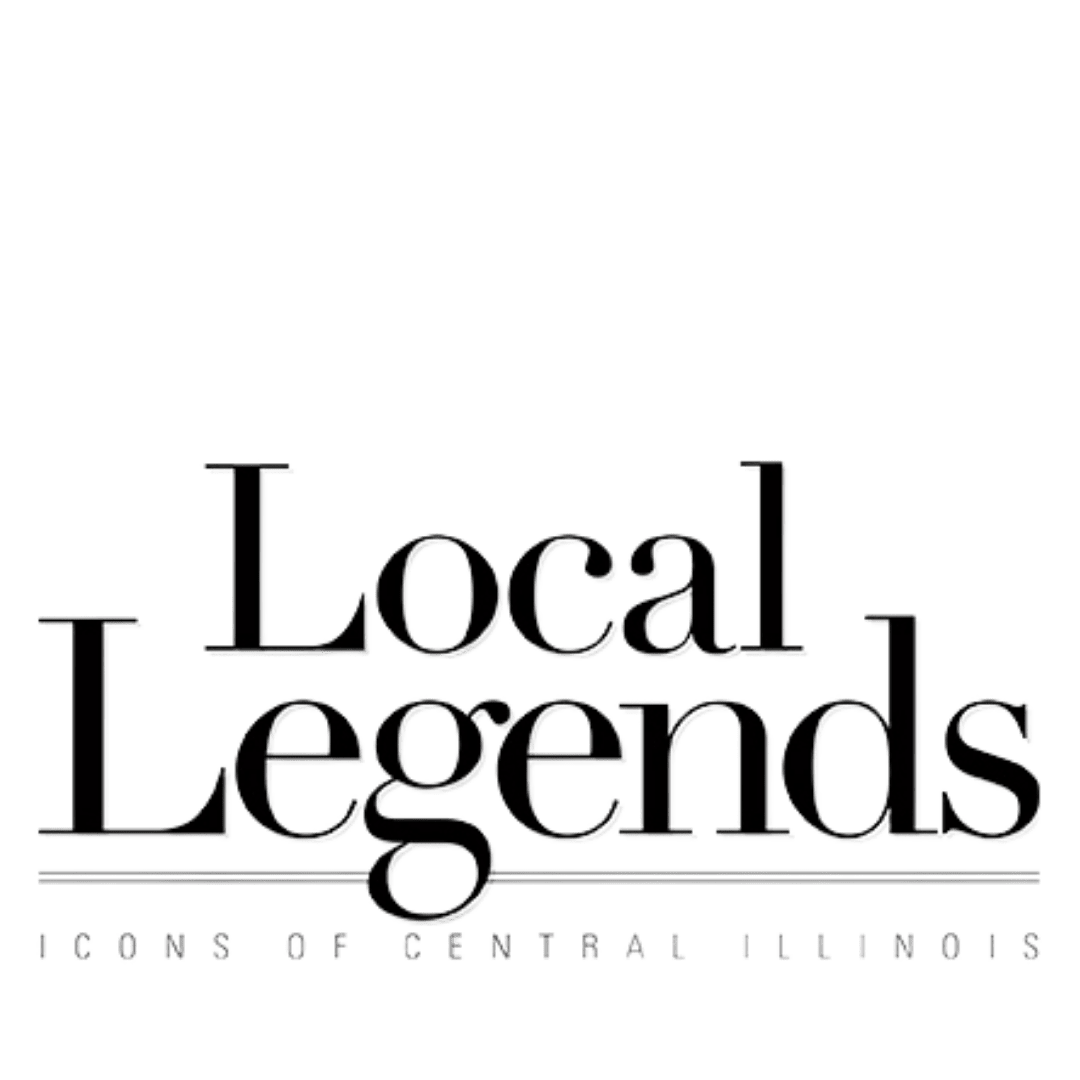Leading innovative transformations in healthcare to improve patient outcomes
I am a Peoria native and graduated from Woodruff High School. I attended Illinois State University and started down four or five different majors—from speech pathology and business to public relations and psychology—before I declared my major in social work. They all sounded interesting to me, and I could not see myself in just one field my entire life. This was rather prophetic, in that I have been blessed to have had many different types of work throughout my career.
My mom worked for Illinois Bell for 35 years. She was bored after retirement and started working part-time for OSF Saint Francis Medical Center. She helped me connect with the head of public relations to learn more about what it was like to work for a healthcare organization. I immediately knew this was a great fit with my values and my desire to contribute.
I began my career at OSF Saint Francis Medical Center as a case manager for patients with traumatic brain injuries. I then worked in an operations role as the manager for Outpatient Rehabilitation Services. My career has been a great journey. I have never done just one thing, never focused on just one skillset. I have worked for OSF for 21 years, but the longest I have remained in any one position is in my current role, which I began six years ago.
I would say the biggest change I made in my career was when I took a position as a 6 Sigma Black Belt in performance improvement. This was a lateral move. I was trained by Caterpillar and had the opportunity to gain an entirely new skillset. This role gave me the skills to look at how to do systemic change across a large organization. It was a great primer for my next role, which focused on technology strategy and planning. From there, I took a leadership role for the deployment of an enterprise-wide electronic medical record, and then moved into a system-wide role to lead performance improvement. Today, I have the great opportunity to lead innovation, strategic planning, analytics, business development and marketing as senior vice president and chief strategy officer.
Please share some of the highlights of your career. What have you learned along the way?
I started with patient care, which gave me a great perspective and desire to make the health system better. Helping one patient and family at a time is hugely rewarding, but I really wanted to change the system—which I thought could do a far better job caring for patients’ needs. I learned the importance of continuing to learn, taking stretch roles, hiring and building the right teams, and partnering with others to lead change. As a manager, I got to build a program and run it; as a technology planner, I learned change management and how to engage an organization; and as a leader, I have learned the importance of having the right team.
Most recently, I led the creation of our innovation agenda, including health technology incubation, usability and simulation strategies, and venture capital investment strategies. I also have been blessed to lead many transformation initiatives across the OSF Healthcare System, including the implementation of Epic software, organizational design transformation, population health strategy development and the creation of a system-wide program management office. Through this journey, I have learned that you must have a passion for what you are doing, focusing less on your career and more on how you can contribute to improving outcomes.
What are the biggest challenges you face in your current role? Greatest accomplishments?
The speed of change in healthcare is challenging on many fronts. There are no simple answers, and translating very complex strategies into simple, executable plans is the most challenging aspect of the work. You have to feel comfortable explaining the goals of your organization on a Post-It note. Organizational strategy is a reflection of culture, and that is owned by the entire organization, not just the executive team.
A few things that I am most proud of are helping to create our new vision and system strategy, leading our EMR implementation, and most recently, the development of our innovation strategy. Six years ago, I worked with our CEO and executive team to define a new vision for OSF HealthCare, which set the tone for transforming our organization into an integrated system that is well-positioned for new models of care.
I am very proud of the work we have done as an organization to embrace new technologies. It has been a huge transition for our entire industry, but it has made a positive impact on patient safety and laid the groundwork for a foundationally new way to care for people. We can now do virtual visits through two-way video, and we are able to understand clinical information from all settings inside the health system.
I am also proud of the work we have done around innovation. We recently became members of AVIA and Matter [two organizations working to fuel future healthcare innovations], as well as being asked by President Obama to join the Health Care Payment Learning and Action Network, which works to emphasize value over volume in healthcare. Additionally, we are among several of the nation’s largest healthcare systems, payers, policy advocates and consumer groups that are uniting to accelerate the transformation of U.S. healthcare systems through the Health Care Transformation Task Force. These accomplishments, combined with our most recent work in eHealth, integrating technology into care through eICU and OSF OnCall, allow us to enhance our clinical quality while keeping care in the communities we serve.
Finally, I am very proud of the team I have been able to work with over the years. I believe mentoring others is every leader’s responsibility, and I am very excited to see some of the younger people I have hired along the way become really great leaders themselves.

How do you see the healthcare industry evolving in the coming years?
The biggest challenge is addressing the fact that the existing model is not sustainable. Disruptive innovation is changing the way people seek care. Consumer choice is no longer considered unheard of; it is becoming the norm. Market consolidation across the country continues for both healthcare providers and payers, while at the same time, new healthcare entrants are joining the market from retail, concierge medicine and technology companies. The velocity of change is profound.
How are you contributing to this change?
One of my greatest contributions is being able to help lead the transformation of healthcare from an illness-focused industry to one focused on how to keep people well. It’s ironic in that my first role in healthcare was as a social worker—focusing on how to meet people where they were at to address the social determinants of health. Healthcare at that time was a very acute-care, episodic, symptom-focused model of care. While the care was great for a heart attack, it never really got to the essence of caring for the entire person.
Today, OSF is helping to lead the transformation of this model to one focused on every aspect of a person’s journey through life. That means building partnerships throughout the communities we serve and helping people move to a state of well-being. That is meeting people where they are! I feel blessed to be a part of that.
Please reflect upon your major accomplishments of recent years.
One of our recent accomplishments is our work in the development of healthcare analytics. We have built a culture that now uses data to help drive our strategic and clinical decisions. We measure our success by patient outcomes, total health and patient perception. This capability allows us greater insights into complex information to monitor and improve these outcomes. We have now begun to use this data to do predictive analytics to help identify areas of risk for patients before they happen.
Collaborating with other leaders to help frame the work underway with primary care transformation is another major accomplishment. This work will change the experience of care for our patients through increased access, expanded care teams, mobile technology use and attention to wellness. Our partnership with the University of Illinois at Urbana-Champaign’s College of Engineering through Jump Applied Research for Community Health through Engineering and Simulation (ARCHES) represents a revolutionary partnership between clinicians and engineers to stimulate advancement of healthcare.
Our product engineering arm, SIMnext, is working directly with clinicians, guided by real-time patient data to provide the bridge between learning environments and real-life clinical experience. We are relentlessly pursuing, discovering and implementing leading-edge technologies and designs that will actively affect how training and simulation are used to improve patient outcomes and add to the overall wellness.
In addition, our oldest son is entering college this year. This is a true milestone for which my husband and I are grateful and proud.
What is your secret to maintaining a balance between your work and personal life?
My mom was the greatest influence in my life. She taught me by example how to balance work and personal life, and the importance of contributing back. When my brother became ill during his college years, my mother took care of him while working at the same time. I learned balance and compassion from her. You really have to be deliberate about balance and not beat yourself up for everything you don’t do—and really enjoy what you can do.
What is your leadership philosophy?
Hire people better than you and place them in circumstances where they can grow. Teach them both leadership and humility, and then get out of the way.
What do you consider to have been the most pivotal point in your career?
Taking a job in performance improvement helped me get a 30,000-foot view of a very complex organization that I would never have seen in a more focused role. It was all about learning to be an informal leader and shaping the future by leading others through influence, not hierarchy. This taught me that control is an illusion, and that building dynamic teams is what moves an organization forward.
Did you have a mentor in the early stages of your career?
I did! Susan Wozniak, the COO at OSF Saint Francis Medical Center at the time, provided me the opportunity to apply for 6 Sigma training. She did not know me, but she gave me the chance to grow. She helped me learn the art of being forthright and fearless. She taught me the importance of continuous learning and always maintaining your composure under pressure. Her standards were very high, but she let me learn along the way, and that meant making some mistakes and moving on.
What is the best advice you’ve ever received?
My mom would tell me: “Show up at work and be the person you want to be, not what you feel like that day.” This was a reflection on the need to be very deliberate in how you treat others, and how you must aspire to take accountability for every day, not just the days you feel are going your way.
What advice would you give to a young, up-and-coming female professional?
You do not need to be fully formed and perfect before you take a chance on doing something new. Give yourself a chance to grow where you are, learn everything you can and take on new challenges that you don’t have all figured out yet! Some of the best experiences I have had were while learning—not in doing what comes easily or naturally. iBi






